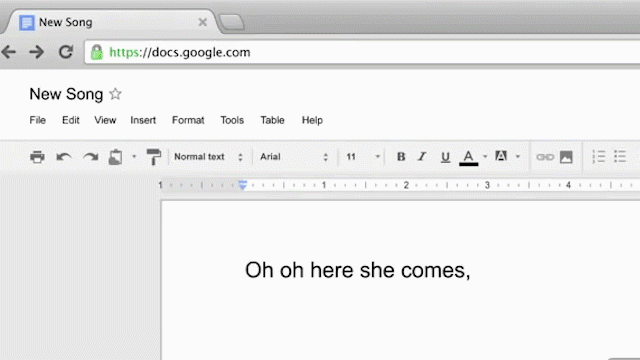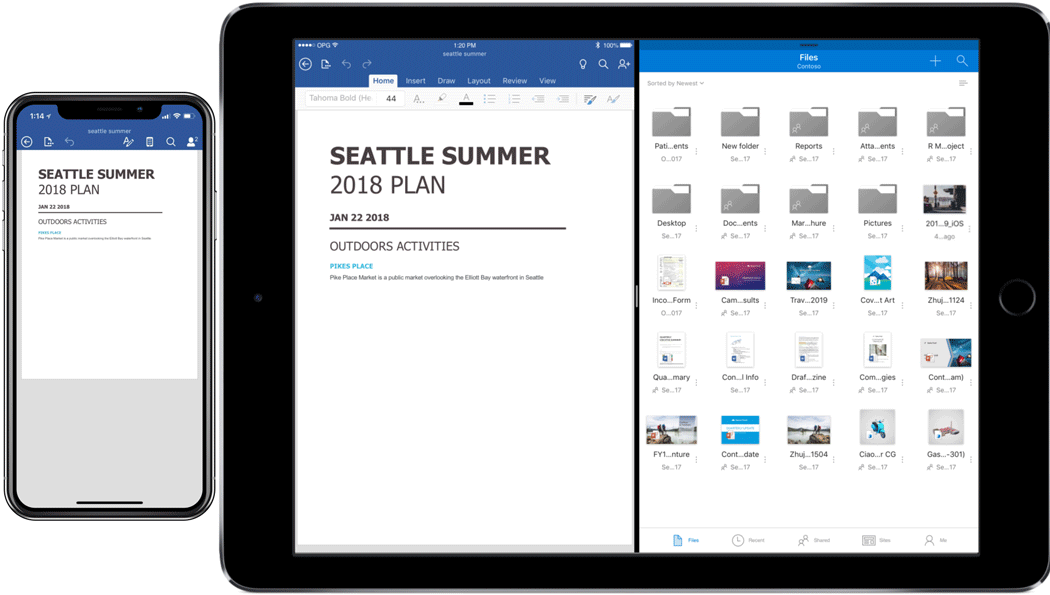- Articles
- 3 reasons switching from Google Docs to Offic...
Table of Contents
For over a decade, Google has tried to win over Microsoft Office users. The one advantage the Google G Suite of productivity apps once had over Microsoft Office was simpler file sharing and better real-time collaboration on documents. By storing Google Documents in the cloud-based Google Drive, users could in one click share the document with anyone inside or outside an organization. Called “co-authoring,” this enabled or more people to edit the shared document in real time.

However, the co-authoring advantage didn’t last long for Google as Microsoft quickly added similar functionality to its cloud-based Office 365 suite to close the gap. The most recent cloud storage and collaboration features added by Microsoft make a compelling case for Google G Suite users to switch to Office 365. They’re confident enough to offer companies using Google (and Box or Dropbox cloud storage) free access to Microsoft OneDrive for Business for the remainder of their contracts with the other file-sharing providers—essentially buying them out from competitors. But should your company make such a move?
At Amaxra, we’ve worked with both Google G Suite and Microsoft Office 365 to best understand the pros and cons of each. We’ve also heard how numerous business customers—from startups to enterprises—have gone from Office 365 to G Suite (and often back again). With the latest updates, we believe users of Google G Suite should move to Microsoft Office 365 for three big reasons:
Office 365 has a better price-performance ratio than G Suite
Google’s strategy from the start was to make their G Suite apps “good enough” compared to Office 365. Because their primary business model is to serve advertising on Internet searches, Google could offer their G Suite apps for a couple of dollars per month less than Microsoft Office 365. By undercutting Microsoft on price and offering the flashy co-authoring feature, Google was able to convince some budget-conscious companies to switch. However, these companies quickly learned the lower price didn’t equate to the superior performance of Microsoft Office apps.
An IT professional at a midsize networking software company relayed to me how they were sold on Google G Suite for no other reason than it was $2 cheaper per month than Office 365. Her company was at the end of their onsite licensing agreement for Microsoft Office and wanted to move to the cloud. Google showed the company how paying $2 per month less across almost 500 seats meant tens of thousands in savings over a typical Office 365 contract. However, the IT pro notes that $2 per seat savings was quickly exceeded by the labor, consulting fees, and value-add services to migrate Microsoft Outlook email to Gmail and moving files stored in highly-structured and centralized Microsoft SharePoint folders to unstructured personal Google Drive storage accounts. In addition, she noted the company had to buy Microsoft Office licenses for their finance department (who revolted against a mandate forcing the usage of Google Sheets) and employees in key customer-facing roles who objectively noted the Google alternatives to Microsoft Excel, Outlook, and PowerPoint were nowhere near feature parity.
OneDrive + SharePoint is centralized with “in-place” file recovery
We have written about the many benefits of Microsoft SharePoint and OneDrive For Business cloud storage in previous blogs. In Office 365, every user by default receives their own personal allotment of OneDrive For Business cloud storage. For secure structured storage of files for teams, there’s SharePoint. But in Google G Suite, users are given their personal Google Drive storage and there’s no analogue to SharePoint. Although it is simple to share and collaborate on files in Google Drive, the lack of structured file storage often causes problems with team file ownership.
An example of this was when a marketing professional told me how he attempted to organize a folder on his Google Drive for his team. He then shared the folder with his team as their “Marketing Drive,” given each member edit permissions for their own subfolders. For over a year, the marketing team had moved files onto the Google Drive because it was the only way to have a collaborative space for the team. In an attempt to clean up what appeared to be redundant files in his personal Google Drive, the marketing professional accidentally deleted numerous business-critical files used by his team. Adding insult to injury, restoring users’ lost files on the old shared “Marketing Drive” folder required each individual to go through a convoluted recovery process. Due to the design of Google Drive’s file permission architecture, the company’s IT department could not perform an in-place recovery so that the files and folders were restored to their original locations.
In Office 365, this team would’ve used a SharePoint portal site for their structured file storage—which has cloud-based, enterprise-grade redundancy to protect against file removal. And in the event that the employee’s personal account’s OneDrive For Business was used for team file storage, Microsoft offers a superior in-place file recovery solution with Files Restore. Unlike the limited restore features in Google Drive, the Microsoft Files Restore solution is self-service recovery for files compromised due to accidental deletion, file corruption, or malware infection.
Office 365 works perfectly well on Mac and iOS devices
Companies with investments in Apple hardware such as MacBooks, iPads, and iPhones often claim that Google G Suite apps work better on the Apple platform than Office 365 apps for macOS and iOS. However, starting in 2017 there were steady feature updates to the Mac and iOS versions of Office 365 from Microsoft to enhance how teams create content on the platform. For example, the latest updates from Microsoft to the Office 365 apps for Mac and iOS enabled online document co-authoring, autosaving for files stored in OneDrive and SharePoint, improved search in Outlook, and the ability to drag-and-drop content or files in the native iOS apps for Office 365.

While these features were already available for Office 365 users on Windows PCs and (ironically) Google Android mobile devices, they were all features that Mac and iOS users requested or required before looking at switching from G Suite. The Mac user holdouts have lost their key excuses not to switch.
Companies with 500 users or more of Google Drive can move their operations into OneDrive For Business for free through June 30, 2018. As a certified Gold Microsoft Partner for Office 365, Amaxra experts will evaluate what it takes to switch from Google G Suite.
